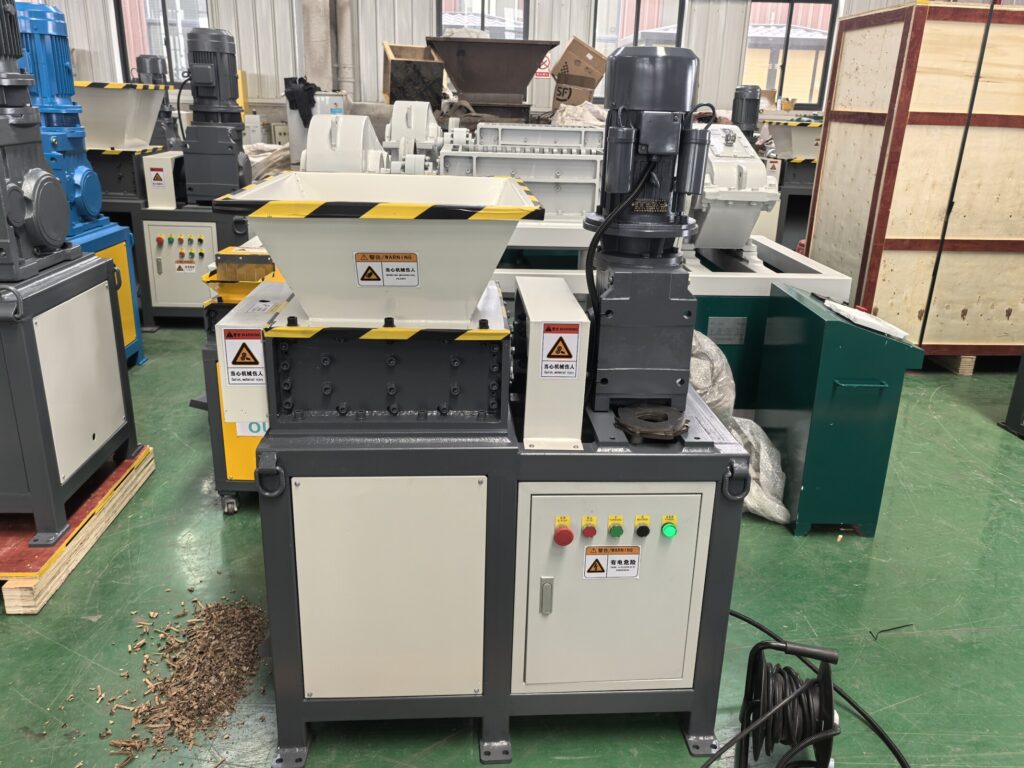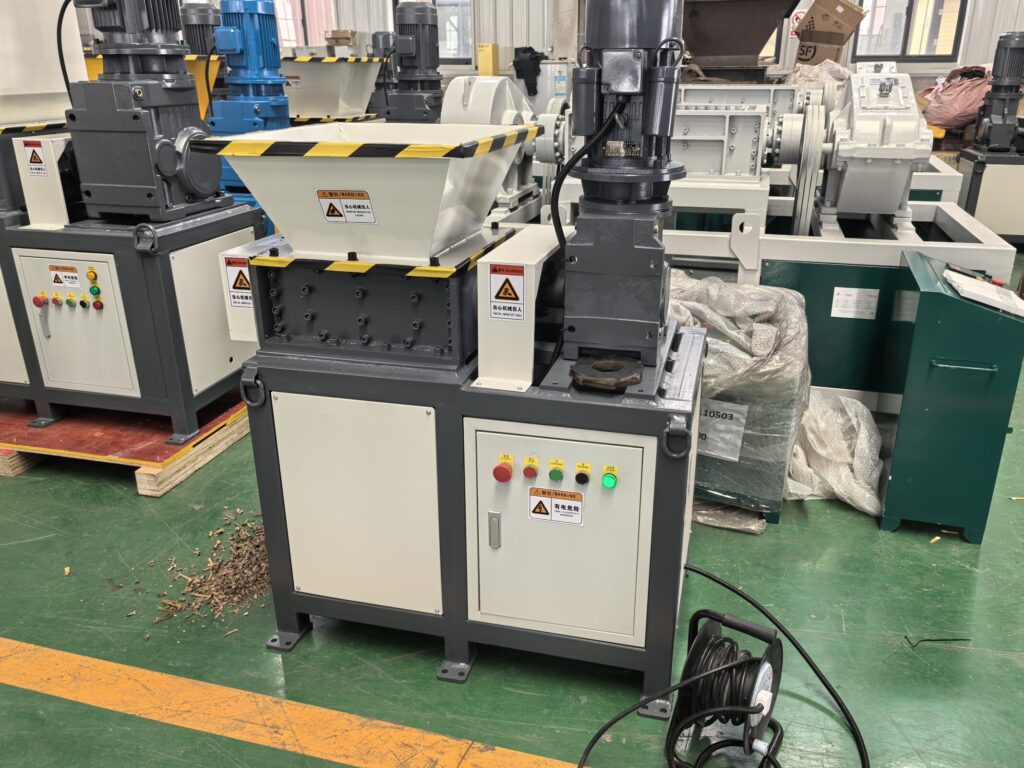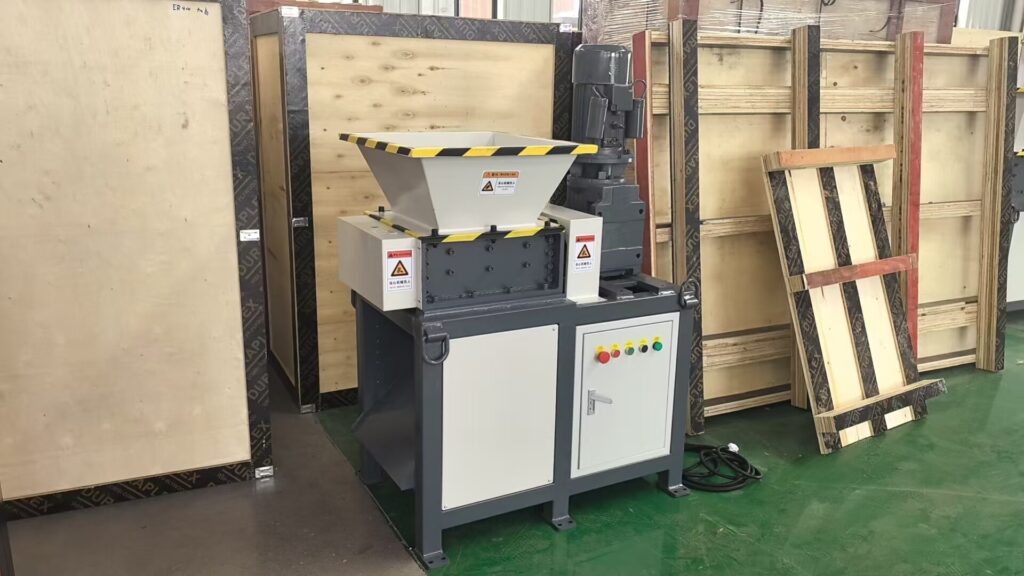What is a small shredder?

A small shredder is a compact-sized shredding machine designed to reduce various types of waste materials into smaller, manageable pieces. Unlike large industrial shredders, small shredders are specifically built for limited-space environments or low-to-medium volume processing. These machines are widely used in small recycling businesses, laboratories, offices, and workshops. Small shredders can process materials such as plastic bottles, PVC sheets, paper, cardboard, fabric, aluminum cans, and even small circuit boards, depending on the machine’s blade configuration and motor power. Typically, small shredders feature a single shaft or dual shaft design, equipped with hardened steel blades that rotate at a controlled speed to ensure efficient and safe shredding. The motor power usually ranges from 1.5kW to 15kW, making them energy-efficient yet powerful enough to meet basic waste handling needs. Due to their compact size, small shredders are easy to install and operate, requiring minimal maintenance and occupying less floor space. They are also cost-effective solutions for small-scale operations that want to reduce waste volume, protect confidential information, or prepare materials for further recycling processes. In some applications, small shredders are used as a pre-processing step before materials are crushed, baled, or pelletized. Additionally, many models come with safety features such as emergency stop buttons, overload protection, and enclosed chambers to ensure user safety during operation. With the growing emphasis on sustainability and responsible waste management, small shredders offer a practical and affordable solution for individuals and businesses aiming to reduce their environmental footprint.
Why use a small shredder?

Using a small shredder offers a range of practical benefits for businesses and individuals who need efficient waste management in limited spaces or with lower processing volumes. One of the primary reasons to use a small shredder is its ability to reduce the volume of waste materials such as plastic, paper, fabric, aluminum cans, and light electronic components, making disposal and recycling easier and more cost-effective. These machines help improve storage efficiency by turning bulky items into compact, shredded material, saving valuable floor space. In addition, small shredders are energy-efficient and cost-effective, making them ideal for startups, small recycling centers, and workshops that may not have the budget or capacity for large industrial shredders. They also play a vital role in data and product security, as shredding sensitive documents or rejected product samples helps prevent information leakage and protects intellectual property. Small shredders are user-friendly, require less maintenance, and are often equipped with safety features, making them easy to operate even for non-specialized staff. They can also be used in production lines as a pre-treatment step, preparing materials for further processing such as melting, baling, or granulating. With increasing environmental regulations and awareness of sustainable practices, small shredders support responsible waste management by enabling users to recycle materials more effectively and reduce landfill contributions. Their compact size allows installation in offices, schools, laboratories, or small-scale factories without requiring significant infrastructure changes. Overall, small shredders provide a practical, affordable, and environmentally friendly solution to modern waste challenges.
How to use a small shredder?

Using a small shredder is generally straightforward, but proper operation ensures efficiency, safety, and a longer machine lifespan. To begin, place the shredder on a stable and level surface in a well-ventilated area with enough space around it for feeding and maintenance. Make sure the machine is connected to a compatible power source according to the voltage requirement, usually 220V or 380V depending on the model. Before turning on the machine, check that the blade chamber is clean and free of any leftover debris or foreign objects. Once ready, switch on the shredder and allow the motor to reach its operating speed. Feed materials gradually into the hopper or feeding port, ensuring that items do not exceed the input size limit to avoid jamming or blade damage. It is important not to overload the machine—feed materials in moderate quantities and avoid inserting hard metals or stones if the shredder is not designed for them. Many small shredders have reverse functions; if a jam occurs, stop the machine and reverse the motor to clear the blockage safely. After use, turn off the machine and disconnect the power. Regularly inspect the blades for wear, and clean the chamber to maintain performance. Lubricate moving parts as recommended in the user manual. Always wear protective gloves and safety glasses during operation and avoid placing hands near the feeding area while the machine is running. For shredders with dust or particle output, connect a collection bag or dust control system if needed. Following these basic steps will ensure safe and efficient use of a small shredder across a wide range of applications such as recycling plastic, paper, cardboard, and light waste materials.
